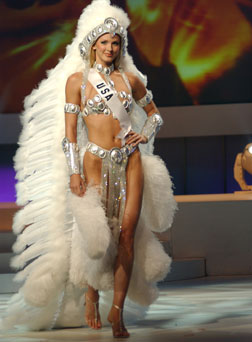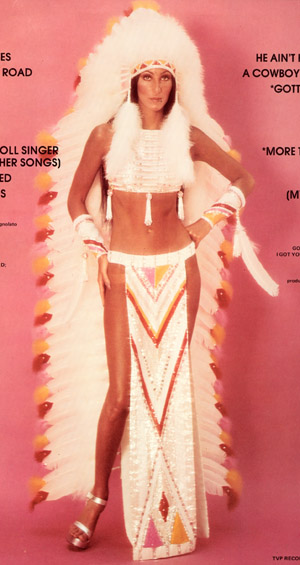 More on The Evidence Against Media Violence. From the LA Times, 4/30/01:
More on The Evidence Against Media Violence. From the LA Times, 4/30/01:
 More on The Evidence Against Media Violence. From the LA Times, 4/30/01:
More on The Evidence Against Media Violence. From the LA Times, 4/30/01:
Don't Let TV Be Your Teenager's Main Source of Sex Education
By KATHLEEN KELLEHER, Special to The Times
Last month, a sophomore at a Baltimore County, Md., private school secretly videotaped himself having sex with a 15-year-old girl and then played it for his junior lacrosse teammates. A day later, a varsity player borrowed the tape and showed it to his teammates.
Once it was discovered, school administrators canceled the lacrosse team's season, expelled the sophomore and suspended about 30 students who had watched. The scandal reportedly shook the county's private school community to its core, compelling administrators, teachers and parents to ask why none of the boys involved had the moral sense to object or to reach for the eject button.
Shocked?
You shouldn't be, says Deborah Roffman, a Baltimore-based sex educator. Add it to a list of children's inappropriate sexual behavior: oral sex among middle-schoolers, fifth-graders freak dancing (body grinding) and kindergartners imitating Britney Spears.
The videotaping incident happened against a cultural backdrop where children increasingly and at ever-younger ages are being sexualized, eroticized and exposed to torrents of inappropriate messages about sexuality. "They are seeing sex ad nauseam without context, without adults standing next to them and saying, 'Let's talk about what we just saw and what it means,' " says Roffman, author of the new book "Sex & Sensibility: The Thinking Parent's Guide to Talking Sense About Sex" (Perseus). "Children do not have the ability to interpret it. You can't fight the influences, but you can teach children how to be critical viewers and listeners."
Sexual references-per-hour of prime-time television were three times higher in 1999 than in 1989, according to the Parents' Television Council. No oral sex references were made in a month of television in 1989, compared with 20 in 1999; references to masturbation increased 700%. By adolescence, a child has watched roughly 15,000 hours of television, estimates the National Institute on Media and the Family.
How sex plays is more disturbing, says Roffman. Reportedly, the sophomore in the videotaping incident was inspired by a scene from the movie "American Pie" in which a young man records himself having sex with a young woman and shows it to his friends. "What I found so disturbing about the videotaping incident is that there were reports that there was laughter among the boys," says Roffman, who wrote about the incident for the Washington Post.
"Here is this girl being dehumanized, and they think it is funny. They applied a selective brand of amorality in a situation where there was enormous group pressure."
The pervasive "boys will be boys" attitude is a dangerous, self-fulfilling prophecy, warns Roffman, who adds that many social forces lead boys to toss out their moral compass when it comes to girls and sex. "Increasingly, sex is portrayed on television and in movies as dehumanizing and demeaning—the meaning is literally taken out," says Roffman. "The message again and again is sex is recreation."
Witness MTV's "Undressed," in which barely dressed teenagers have sex while their parents are gone, and "Temptation Island," a show in which couples arrived on an island, were split up and remixed into different pairs to see which relationships would survive the onslaught of, well, temptation.
Capitalizing on the voyeuristic genre's popularity, UPN has a show called "Chains of Love," in which a man or woman is handcuffed to four people of the opposite sex, one of whom is chosen at the end for a weekend together. (Whatever happened to "The Dating Game"?)
"There is no such thing as a safe family viewing hour," grouses Debra Haffner, a sex educator in Norwalk, Conn., and author of "Beyond the Big Talk: Every Parent's Guide to Raising Sexually Healthy Teens" (Newmarket Press, 2001). "TV should not be the sex educator of children," she says."Parents should control what their children watch and hear."
When Haffner's 15-year-old daughter wanted to see "Temptation Island," Haffner agreed to it—if they watched it together so that Haffner could explain it. ("I told her this is a show about sex in your 20s," recounts Haffner).
"Middle-school children have to be trained in media literacy before you let them watch things alone," she says.
Research linking behavior to what people hear and see is equivocal, says Roffman. But most sex educators agree that there is a relationship. The biggest problem for kids, Roffman explains, is parents who can't set limits. "Yesterday, I had a mother who said to me, 'I have an 8-year-old daughter who wants to dress like Britney Spears, and I don't know what to do,' " says Roffman. "That this mother considered that that was a viable option to allow her 8-year-old to dress up like someone who is clearly a sex object is grossly inappropriate developmentally."
Our culture is at cross-purposes: Sex and sexualized youth are rife in the media and on the Internet, yet sex education in schools is becoming narrower, says Roffman, and, repeatedly, children report that parents explain very little about the subject.
"Children will act out and push the envelope for only one reason: because they want someone to say, 'Enough,' " says Roffman. Unfailingly, parents must interpret the culture of sex and provide a filter of values until "you know your voice is in [your child's] head."
"It is time," says Rothman, "for everyone to wake up and smell the garbage."
Birds & Bees is a weekly column on relationships and sexuality. Kathleen Kelleher can be reached via e-mail at kellehr@gte.net.
Copyright © 2001 Los Angeles Times

From the LA Times, 8/2/01:
Study: TV Sex Less Subtle, Less Often
By MEGAN GARVEY, TIMES STAFF WRITER
WASHINGTON — A study released Wednesday by a conservative watchdog group found that the volume of sexual material on television during the so-called family hour from 8 to 9 p.m. has declined—but that what remains is increasingly explicit.
References to oral sex and pornography are growing more common during what the Los Angeles-based Parents Television Council called the "sour family hour," when about 10 million children are watching TV.
Overall, the study found increasingly raunchy material during the earliest hour of prime time, with instances of violence and profanity up more than 70% from two years ago. The report singled out such shows as NBC's "Friends," UPN's "WWF Smackdown!" and—calling it "probably the most objectionable family-hour show"—Fox's "Boston Public."
L. Brent Bozell, the council's president, said at a news conference that his group plans to enlist elected officials and parents in an effort to get the networks to "clean up" the public airwaves. Appearing with him were Sens. Sam Brownback (R-Kan.) and Joseph I. Lieberman (D-Conn.).
"We will also publicly shame those advertisers who market and sponsor violence, sexual raunch and vulgarity to our nation's children." Bozell said. "We will name names and often."
With its high-profile supporters, the study marks the latest in a series of recent indications that Hollywood's critics on Capitol Hill intend to attack sexual content in much the same way they have crusaded against violent entertainment.
Just last week, Brownback sponsored a forum on the effect on children of exposure to sexual content in entertainment. "While there are even more sexual depictions, innuendoes and jokes in popular entertainment than violence, there has always been less analysis and discussion of the ways in which it might affect young people," he said at the forum. "This is a mistake."
Lieberman's spokesman, Dan Gerstein, said Wednesday that lawmakers think they need to frame children's access to sexually explicit material as a public health threat as well as a morality issue.
"If you make the case that the depiction of recreational sex without consequences can lead to increased risk for sexual diseases and teen pregnancy, that takes some of the politics out of it," Gerstein said.
The Parents Television Council analyzed sexual, violent and profane material contained in 200 hours of programming aired on broadcast networks ABC, CBS, Fox, UPN and WB during what's known as "sweeps" rating periods in the 2000-01 season.
UPN, the only major network without an in-house standards-and-practices executive, ranked first in overall objectionable material with 18.1 instances per hour, more than double the network-wide average of 8.41. The upstart network led all others in violence and foul language. The least amount of offensive material, 3.22 instances per hour, was aired by CBS, a network known for its older audience.
NBC ranked second overall for objectionable material with a per-hour average rate of 9.1. Fox, which was rated the worst two years ago, was third with 7.8 instances. WB had 7.5 and ABC, 6.7.
Mark Honig, the council's executive director, said the increasingly explicit depictions of sex were particularly disturbing.
"Today you tune into 'Boston Public' and you can see two high school students engaging in oral sex," he said, "one of them trying to get the support of the other for a student council election."
No one was available to comment from the office of David E. Kelley, the Emmy-winning writer who created the show about an urban public high school. Fox said in a statement: "We believe that parents have a right to make an informed decision about what their families view."
From the Associated Press:
Study: Correlation drawn between teen sex and TV
September 6, 2004
- By LINDSEY TANNER
CHICAGO -- Children who watched a lot of TV with sexual content were about twice as likely to start having intercourse during the subsequent year as those with little exposure to televised sex, researchers found.
High exposure to TV sex among those age 12 to 17 also was linked with a lower but still substantially increased risk of starting non-intercourse behavior, including passionate kissing and oral sex, the researchers found.
Even shows that only refer to sex but don't depict it had the effect, they found.
"Exposure to TV that included only talk about sex was associated with the same risks as exposure to TV that depicted sexual behavior," said Rand Corp. behavioral scientist Rebecca Collins and colleagues.
From innuendoes to depictions of intercourse, sex is pervasive on TV, present in about two-thirds of all shows other than news and sports, and teens watch an average of three hours of television daily, previous research has shown.
TV thus "may create the illusion that sex is more central to daily life than it truly is and may promote sexual initiation as a result," the researchers said.
"When they're watching it for three hours a day, it really does become their social world. Those characters are people they identify with and pay attention to," said Collins, the lead researcher.

TV sex rarely deals with negative aspects most teens aren't prepared to deal with, including unwanted pregnancy, AIDS and other sexually transmitted diseases, she said.
That "sends kids the message that everybody's having sex and nobody's thinking about responsibility and nothing bad ever happens," Collins said. "You don't see the fade to black, the couple has sex, and the next morning says, 'You gave me an STD."'
The study appears in September's Pediatrics, released Tuesday. The results are based on nationwide telephone surveys of 1,792 adolescents queried in 2001 and again in 2002. Parental consent for participation was obtained before the interviews.
The researchers devised a list of 23 popular shows that on average featured abundant sexual content.
Programs the researchers considered high in sexual content included "That '70s Show," "Friends" and "Sex and the City" -- all popular with teens.
Participants then were asked how often they watched those 23 shows. They also were asked whether they engaged in various sexual activities; results were compared from the two surveys.
The number of teens who reported having had intercourse climbed from about 18 percent to 36 percent. The number who'd had sexual experiences other than intercourse climbed from 62 percent to 75 percent, Collins said.
Factors that increased the likelihood of having intercourse included being older, having older friends and getting poor grades. But even considering those factors, television still remained a strong influence, the researchers said.
Many youngsters start having sex during their teen years, and previous data show that 46 percent of high school students say they've had intercourse.
But many say they wish they'd waited longer to have sex, and television might be among factors influencing them to become sexually active too soon, the researchers said.
Liliana Escobar-Chaves, a researcher at the University of Texas School of Public Health, said the findings illustrate the importance of parents viewing and discussing TV with their kids, and of encouraging TV writers to depict sex responsibly.
The latter effort is a focus of The Media Project, a Los Angeles-based advocacy program that works with TV networks to include accurate and responsible sex images in programming.
"We want kids to look at television with an educated eye," said Melissa Havard, the group's director.
One example is an HIV/AIDS effort the group has collaborated on with media giant Viacom, whose properties include CBS and MTV.
In the past year and a half, Viacom has produced 22 shows with positive HIV messages, including a "Star Trek" episode in which Vulcans had to deal with the stigma of having an AIDS-like disease, said Viacom spokesman Carl Folta.
But while acknowledging that television "certainly can make an impact," Folta was skeptical of the study results.
"I don't think television makes anybody do anything," Folta said. It's just one of many factors that influence young people's lives, he said.
(Copyright 2004 by The Associated Press. All Rights Reserved.)
From CBC:
More sex on U.S. TV, fewer safe sex messages: study
Last Updated Wed, 09 Nov 2005 16:02:51 EST
CBC Arts
Sex on U.S. television is on the rise, but messages dealing with the risks and responsibilities of having sex have dropped slightly, according to a new study.
The Kaiser Family Foundation, a private, non-profit group that studies major health-care issues like reproductive health and HIV/AIDS, released its Sex On TV 4 study at a forum in Washington, D.C., Wednesday.
The study looked at rising amounts of sexual content in U.S. TV programming, including shows like the WB's 'Gilmore Girls', a comedy-drama about a single mother (Lauren Graham, right) raising her teenage daughter (Alexis Bledel). Other shows cited in the study include NBC's 'Law and Order: Special Victim's Unit', Fox's 'The O.C.' and ABC's 'General Hospital.'
"The increase in the number of TV shows with sexual content, combined with the increase in sexual scenes per show, has led to a dramatic overall increase in sexual content on TV since 1998," University of Arizona professor Dale Kunkel, who led research on the study, said in a statement.
"During the same period, the percentage of these shows that include 'safer sex' messages has also increased significantly, but has leveled off in recent years."
After watching more than 1,100 shows on U.S. TV, researchers found nearly 3,800 scenes with sexual content, up from 1,900 similar scenes in 1998, the first time the survey was conducted.
Nearly 14 per cent of the shows that included sexual content also featured the discussion of abstinence, contraception, or "safer sex" messages – up from the nine per cent in 1998 but down slightly from the 15 per cent in the last Sex on TV study in 2002.
Vicky Rideout, a Kaiser foundation vice-president, praised the writers and producers who introduce these messages "in a way that is entertaining, that doesn't cost them anything in the ratings. ... We know from research we've done that it makes a real difference to the kids in the audience," she told the Associated Press.

The study also found that:
* Young Americans between the ages of 8 and 18 watch an average of three hours of television a day.
* 70 per cent of all shows include some sexual content (with an average of about five scenes per hour), up from 64 per cent in 2002.
* 77 per cent of shows on the major U.S. broadcast networks include sexual content, up from 71 per cent in 2002.
* 11 per cent of the shows studied include scenes in which sexual intercourse is either depicted or strongly implied.
* 27 per cent of shows with intercourse-related content (discussed or depicted) include a reference to safer sex or sexual risks or responsibilities somewhere in the show.
* 89 per cent of TV characters involved in sexual intercourse appear to be adults aged 25 or older, up from 2002 (83 per cent).
* 53 per cent of all scenes with intercourse involve characters who have an established relationship with one another.
The study sampled about a week's worth of programming from ABC, CBS, NBC, Fox, WB, PBS, Lifetime, TNT, USA Network and HBO. Researchers looked at all genres other than newscasts, sporting events and children's shows.
Sexual content was defined as "both talk about sex and depictions of sexual behaviour, ranging from kissing and fondling to sexual intercourse." Examples of sexual content referenced in the study included a wide range of TV programming, including the film Blue Crush, WB's Gilmore Girls, NBC's Law and Order: Special Victims Unit, Fox's The O.C. and ABC's General Hospital.
The study was designed and analyzed by professors Kunkel and Keren Eyal, and their colleagues at the University of Arizona. They consulted with researchers at the Washington and Menlo Park, Calif.-based Kaiser foundation, which is not affiliated with the Kaiser medical organization.
"Important research in recent years has indicated that television also plays a role in the sexual socialization of youth, contributing to their knowledge, beliefs, expectations, attitudes and even behaviors," the study said.
"New research over the past several years has documented the powerful positive impact television can have on young people – whether it is learning about HIV from an episode of Girlfriends or about condom efficacy from an episode of Friends ...: it is important to know that Hollywood has the potential to play a positive role."
Copyright ©2005 Canadian Broadcasting Corporation -- All Rights Reserved
From the LA Times:
Television Awash in Sex, Study Says
The report says 70% of shows include sexual content. The number has risen over the years.
By Jube Shiver Jr.
Times Staff Writer
November 10, 2005
WASHINGTON — More than a year after federal authorities launched a crackdown on broadcast indecency, television remains so awash in sex that 7 in 10 episodes include some kind of racy content, a study released Wednesday shows.
The results from the Henry J. Kaiser Family Foundation also found that the number of sexual scenes in sitcoms, dramas and reality shows nearly doubled since 1998, while depictions of abstinence or "safe sex" were on the wane.
However, the study found that overt sexual activity and references were far less common than talk about sex, and many of the activities it tallied consisted of banter, kissing and touching. Only 10% of the shows depicted or implied sexual intercourse, the study found.
One example cited came from "The Gilmore Girls," a WB network drama popular with teens, in which the character Lorelai Gilmore urges her daughter, Rory, to get angry after they spot her boyfriend kissing another woman on the neck in public.
"Aren't you guys sleeping together?" Lorelai asks.
"Mom, it's college…. We're both busy, you know; we have classes; we have friends. It's good to just keep things casual," Rory says.
The report also cited an episode of ABC's "Hope & Faith" in which Faith shows up for her first day of work at a dental office in stiletto heels and a low-cut nurse's outfit, aiming to seduce a male patient.
Kaiser, a nonprofit group in Menlo Park, Calif., makes no recommendations in its report. But Kaiser officials said they hoped it would focus attention on whether television influenced casual attitudes toward sex by teens, who the study estimates watch 20 hours of TV a week.
"We are not saying TV is to blame for this phenomenon," said University of Arizona communications professor Dale Kunkel, who helped conduct the study. "But research is indicating that TV has an impact."
Kaiser said it studied what its researchers considered to be a representative sampling of programs on major broadcast and cable channels. Not included were sports or children's programs, nor were some channels, such as MTV and Comedy Central, that carry a high level of sexual content.
Kaiser's sample found 3,780 scenes with sexual activity, compared with 1,930 seven years ago when it first examined the issue. In that report, 56% of the shows studied included sexual content, compared with 70% today.
Breaking down the numbers by genre on broadcast television, the study found that 91% of comedies had sexual content, compared with 87% of dramas, 73% of newsmagazine shows and 41% of reality programs.
"What we are taking is a Dow Jones industrial average of sexual content," said Vicky Rideout, a Kaiser vice president who oversaw the study.
Results were unveiled at a Washington news conference attended by Sen. Barak Obama (D-Ill.), Fox Networks Group President Tony Vinciquerra and Federal Communications Commissioner Kathleen Q. Abernathy.

Obama called on television broadcasters to improve their program ratings system by making content advisories more prominent on the TV screen. He also said TV executives should make it easier for parents to locate family-friendly shows.
"If the industry fails to act — if it fails to give parents advanced controls and new choices — Congress will," Obama said.
The government has been cracking down on broadcast indecency in the wake of singer Janet Jackson's breast-baring incident during the halftime show at the 2004 Super Bowl.
One main concern of legislators is whether the proliferation of sex on TV is contributing to teenage pregnancy. Last year, a Rand Corp. survey of 1,792 adolescents found that teens who watched a lot of sexually suggestive TV shows were almost twice as likely to have sex earlier than teens who didn't.
However, Robert J. Thompson, founder of the Center for the Study of Popular Television at Syracuse University, noted that teen pregnancy rates soared in the U.S. long before sex became a staple of TV shows.
Still, Tony Perkins, president of the Washington-based Family Research Council, said the Kaiser study underscored the belief among many parents that television was having a coarsening effect on their kids.
"It's not the same today as when I was growing up and parents left their kids in front of the TV to watch 'Captain Kangaroo,' " Perkins said. "The sex depicted on television does have an effect on kids. If we are what we eat, then we become what we watch."
*
BEGIN TEXT OF INFOBOX
What's showing
Sexual content on TV has increased
Percentage of programs with any sexual content*
1998: 56%
2002: 64%
2005: 70%
—
And in prime time, every type of show had sexual content
Percentage of shows with sexual content by genre**
Movie: 100%
Comedy series: 91%
Drama series: 87%
Newsmagazine: 73%
Reality: 41%
—
Here's a breakdown of what was depicted
Percentage of shows that had the following**
Sexual talk only: 39%
Other sexual behavior: 28%
No sexual content: 22%
Sexual intercourse depicted or implied: 10%
—
Numbers do not add up to 100% because of rounding. Los Angeles Times
*Data are based on a composite week of shows on ABC, CBS, Fox, NBC, PBS, WB, Lifetime, TNT, USA and HBO that were randomly selected from October 2004 to April.
**Data are based on three weeks of prime time on ABC, CBS, Fox and NBC.
Source: Kaiser Family Foundation
From the NY Times, 1/31/06:
Personal Health
Children, Media and Sex: A Big Book of Blank Pages
By JANE E. BRODY
In last summer's prize-winning R-rated film "Me and You and Everyone We Know," a barely pubescent boy is seduced into oral sex by two girls perhaps a year older, and his 6-year-old brother logs on to a pornographic chat room and solicits a grown woman with instant messages about "poop."
Is this what your teenage children are watching? If so, what message are they getting about sexual mores, and what effect will it have on their behavior?

The journal Pediatrics addressed the topic last July in a supplemental report, "Impact of the Media on Adolescent Sexual Attitudes and Behaviors." It is an important and, sad to say, much neglected subject. The report, based on a thorough review of scientific literature, was requested by Congress and supported by the Centers for Disease Control and Prevention and the University of Texas Health Science Center at Houston.
A Neglected Subject Pursued
I'll start with the bottom line: "Although a great deal is known about the effects of mass media on other adolescent behaviors, such as eating, smoking and drinking, we know basically nothing about the effects of mass media on adolescent sexual behaviors," the report's principal investigator, S. Liliana Escobar-Chaves of the university's Center for Health Promotion and Prevention Research, concluded.
But to hazard a guess based on clear evidence that media representations influence teenage eating, smoking and drinking habits, adolescents are almost certainly affected — negatively — by sexual references and images from television, in movies and video games, in music, in magazines and on Web sites.
Who's monitoring what teenagers see, read and hear about sex? For the most part, no one. "There is growing concern that youth are accessing media in environments isolated from the supervision or guidance of parents or other adults," the report says. "The average American youth spends one-third of each day with various forms of mass media, mostly without parental oversight."
Despite the advent of V-chips, movie ratings and televised warnings of appropriateness for young people, American teenagers have no trouble getting access to graphic sexual presentations. And no one restricts what they hear in popular songs. The effect of abstinence-only education pales by comparison with the many graphic messages that portray sexual activity — especially unprotected sex outside of marriage — to be a part of our culture as normal and acceptable as eating a Big Mac or drinking a Coke.
The proportion of high school students who say they have had sex has declined some and the rate of teenage pregnancies has dropped, but the numbers remain staggering. The report states: "Approximately 47 percent of high school students have had sexual intercourse. Of these, 7.4 percent report having sex before the age of 13, and 14 percent have had four or more sexual partners."
Each year, nearly 900,000 teenage girls in the United States become pregnant (340,000 are 17 or younger). The rates of sexually transmitted diseases are higher among teenagers than among adults, and 35 percent of girls have been pregnant at least once by age 20. In 2002, chlamydia infections were six times as prevalent among sexually active adolescent girls as they were among sexually active women.
The risks don't end with pregnancy and disease. "Data suggest that sexually active adolescents are at high risk for depression and suicide," the report states. "Early sexual experience among adolescents has also been associated with other potentially health-endangering behaviors, such as alcohol, marijuana, and other drug use."
In an accompanying article, Dr. Joe S. McIlhaney Jr. of the Medical Institute for Sexual Health in Austin, Tex., wrote, "Many parents and some physicians underestimate the negative and lifelong impact of early sexual activity." The main report said that, in hindsight, many sexually active teenage girls wished they had waited longer.
Exposure Is Widespread
Television is the best-studied medium, and the average teenager watches it for more than three hours a day. Two-thirds of youngsters 8 to 18 have TV's in their bedrooms, and two-thirds live in homes with cable TV, providing unsupervised access to sex talk and scenes.
The sexual content of TV is pervasive and increasing. A Kaiser Family Foundation study found that "the shows most watched by adolescents in 2001-2002 had 'unusually high' amounts of sexual content compared with TV as a whole: 83 percent of programs popular with teens had sexual content, and 20 percent contained explicit or implicit intercourse."
"On average," it continued, "each hour of programming popular with teens had 6.7 scenes that included sexual topics."
The foundation study found that "characters involved in sexual behavior in TV programs rarely experience any negative consequences."
"Programs with a primary emphasis on sexual risk and responsibility themes represent only 1 percent of all shows that contain sexual content," it continues. Furthermore, only 3 percent of sex scenes observed involved protection against disease and unwanted pregnancy.
What little is known about the effects of television sex on teenage attitudes and behavior comes primarily from a national telephone survey conducted twice, in 2001 and again in 2002, among 1,792 youths ages 12 to 17.
Growing Up Faster
The survey showed that watching TV with sexual content artificially aged the children: those who watched more than average behaved sexually as though they were 9 to 17 months older and watched only average amounts. Twelve-year-olds who watched the most behaved sexually like 14- and 15-year-olds who watched the least.
The research indicated that adolescents who watched shows with sexual content tended to overestimate the frequency of certain sexual behaviors and to have more permissive attitudes toward premarital sex.
As for movies, two studies that analyzed the content of top movie videos rented by young people revealed a large amount of sexual content, mostly sex among unmarried partners.
The effects of such viewing have been minimally studied. In a 2001 study of sexually active black girls ages 14 to 18, those who were exposed to X-rated movies were more likely to have multiple sexual partners, to have sex more often, to test positively for chlamydia and to be less likely to use contraception.
The music videos aimed at teenagers are rife with sexuality or eroticism, much of it explicit, the report noted. But the effects of this exposure have yet to be studied. Likewise, nothing of a scientific nature is known about the effects of magazines, advertising or video or computer games on adolescents' attitudes and behavior toward sex.

As for the Internet, one national survey of 10- to-17-year-olds found that one in five had "inadvertently encountered explicit sexual content, and one in five had been exposed to an unwanted sexual solicitation while online."
The report called for better studies to assess the effects of sexuality in the mass media on adolescent beliefs and behavior, especially studies that measure over time how the cumulative effects of sexual content in different media affect teenage sexuality.
From the LA Times:
TV's 'family hour' is losing its innocence, study finds
Sex and violence have increased significantly in the last six years in the early prime time slots, a watchdog group says.
By Jim Puzzanghera
Los Angeles Times Staff Writer
9:04 AM PDT, September 5, 2007
WASHINGTON — Sex and violence during the so-called Family Hour on broadcast TV have increased significantly during the last six years, according to a study released today by a watchdog group.
"This early prime-time block was once reserved for programs the whole family could enjoy, but it is now flooded with shows that contain adult programming," said Tim Winter, president of the Parents Television Council.
The group studied 180 hours of original programming on six broadcast networks (ABC, CBS, NBC, Fox, MyNetworkTV and the CW) during three two-week ratings sweeps periods in 2006 and 2007. It found that instances of violence had increased 52.4% since a similar study in 2000-2001 and that sexual content had increased 22.1%.
Networks argue that families have many other options for children, given the increasing number of cable and satellite channels and the ability to watch recorded shows on DVDs or digital video recorders.
But the Parents Television Council report may add fuel to the attempts by some in Congress to pass legislation allowing the Federal Communications Commission to regulate violence as well as indecent content.
The Family Hour traditionally has been from 8 to 9 p.m. Monday through Saturday and 7 to 9 p.m. Sunday. Those programs are supposed to be suitable for viewing by children, and the time slot historically has been home to shows such as "The Waltons" and "The Cosby Show."
Federal indecency regulations are in effect until 10 p.m., and shows usually become edgier as the evening progresses.
But that edginess has been creeping earlier into the broadcasting schedule, and parents "can no longer count on the Family Hour to provide a safe haven," the PTC said.
The group said there was an average of one instance of violence, profanity or sexual content every 4.8 minutes during the time slot, and only 10.6% of the 208 episodes reviewed were free of objectionable content.
Fox ranked as the worst of the broadcast networks with an average of 20.78 instances of objectionable content per hour. The CW network was the best, with 9.44 instances per hour.
Rob's comment
If it isn't obvious what these articles have to do with media violence, just think. Kids learn about sex through the media exactly the same way they learn about violence through the media. Namely, from repeated exposure to a bombardment of images.
And as Highlights of the FTC Report on Media Violence makes clear, the problem goes much further than just "parents aren't doing their job." At no time in history have parents and children faced the media onslaught they do now.
Related links
The evidence against media violence
Why parents aren't fully responsible for how their kids turn out
|
. . . |

|
All material © copyright its original owners, except where noted.
Original text and pictures © copyright 2007 by Robert Schmidt.
Copyrighted material is posted under the Fair Use provision of the Copyright Act,
which allows copying for nonprofit educational uses including criticism and commentary.
Comments sent to the publisher become the property of Blue Corn Comics
and may be used in other postings without permission.